The Matrimandir is a spaceship come to earth. A shimmering gold pannelled orb hovering above an infinite cascade of water and embraced by curved stone tiled petals like a giant Lotus flower. A gently sloped stepped ramp guides you up into the orb, where robed sagacites direct you to the left or to the right, orchestrating a smooth flowing silence. Stone benches set into the outer wall hold pockets of neatly stacked white socks, large enough for all. Footwear having been surrendered on the approaches, these socks ensure the cream carpets stay cream. The sound of running water is the canvas of Silence. Silence is everywhere. We are ushered onwards, climbing up a curving stair, climbing our quiet way up into an open chamber with a shaft of light radiating downwards from a point in the ceiling. The walls are segmented like an orange, alternate pieces tiled or bricked with water running down. Everything is pale, cream, silent. The stairway is mirrored by a twin, like a helix. We continue round this light filled chamber, and then climb again, the silence deepening, until we enter through a doorway, it’s twin opposite, into the sacred heart of the Matrimandir. Twelve pillars describe a circle thirty feet across and reach up to the ceiling thirty feet above. Three square white cushions lie symmetrically placed between each pillar, further out against the wall are a ring of the same cushions. Dead centre and suffused with light shining down from above is a solid glass globe, two feet wide. It looks dusty, but I know it’s an effect of the light. It is utterly silent. There are close to a hundred people sitting still, occasionally someone gets up to leave and cough outside. My stomach creaks. George Clooney does not appear, but I am in space, and in the future. A brief flash of light signals our time is up, slowly we rise and exit down the opposite stair. I try to look at everything, to count and name and describe this space, what am I seeing, what am I seeing? Diffuse light, symmetry, water, silence, curves and arcs, brick and stone.




I desock and pad down the ramp into the open air. Silence remains as we are led to the giant banyon tree, the older temple of the two. One of the hooligans, all hairdo and dark glasses, burbles away. Its massive central bulk is thirty foot round, its many subsidiary trunks up to ten foot in girth. People sit on benches, on the grass, some embrace the tree. A bird choruses in the branches. This is dead centre of Auroville, the axis around which the emerging city galaxy whirls.
Only when we leave behind the gardens, the planted, landscaped, sculpted cosmogeny of the Matrimandir, passing through a little wicket gate to the elegant shaded holding pen, is silence relaxed. Photos are taken, a quiet excitement unsure how to be heard plays amongst the slowly dispersing crowd.
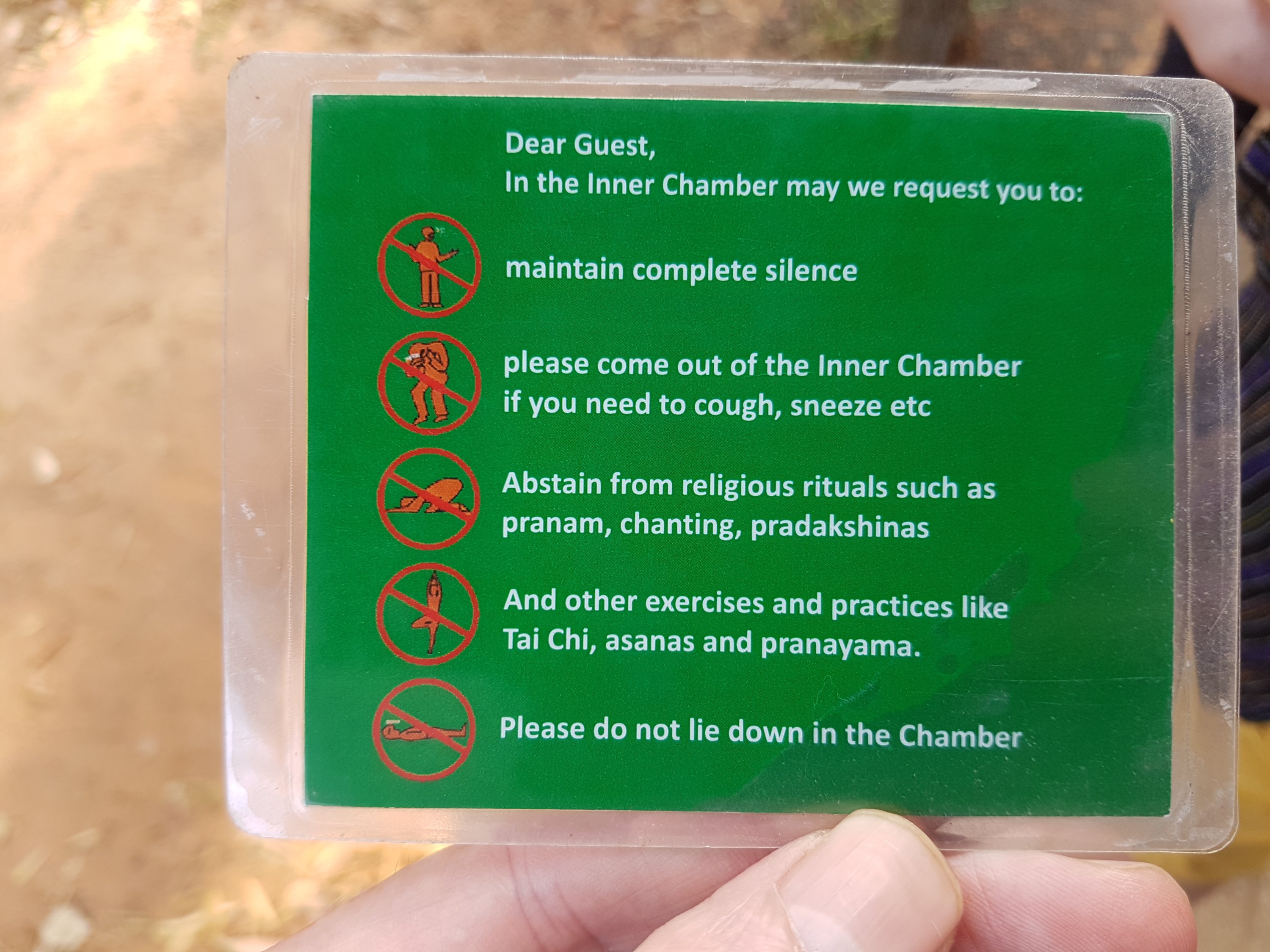
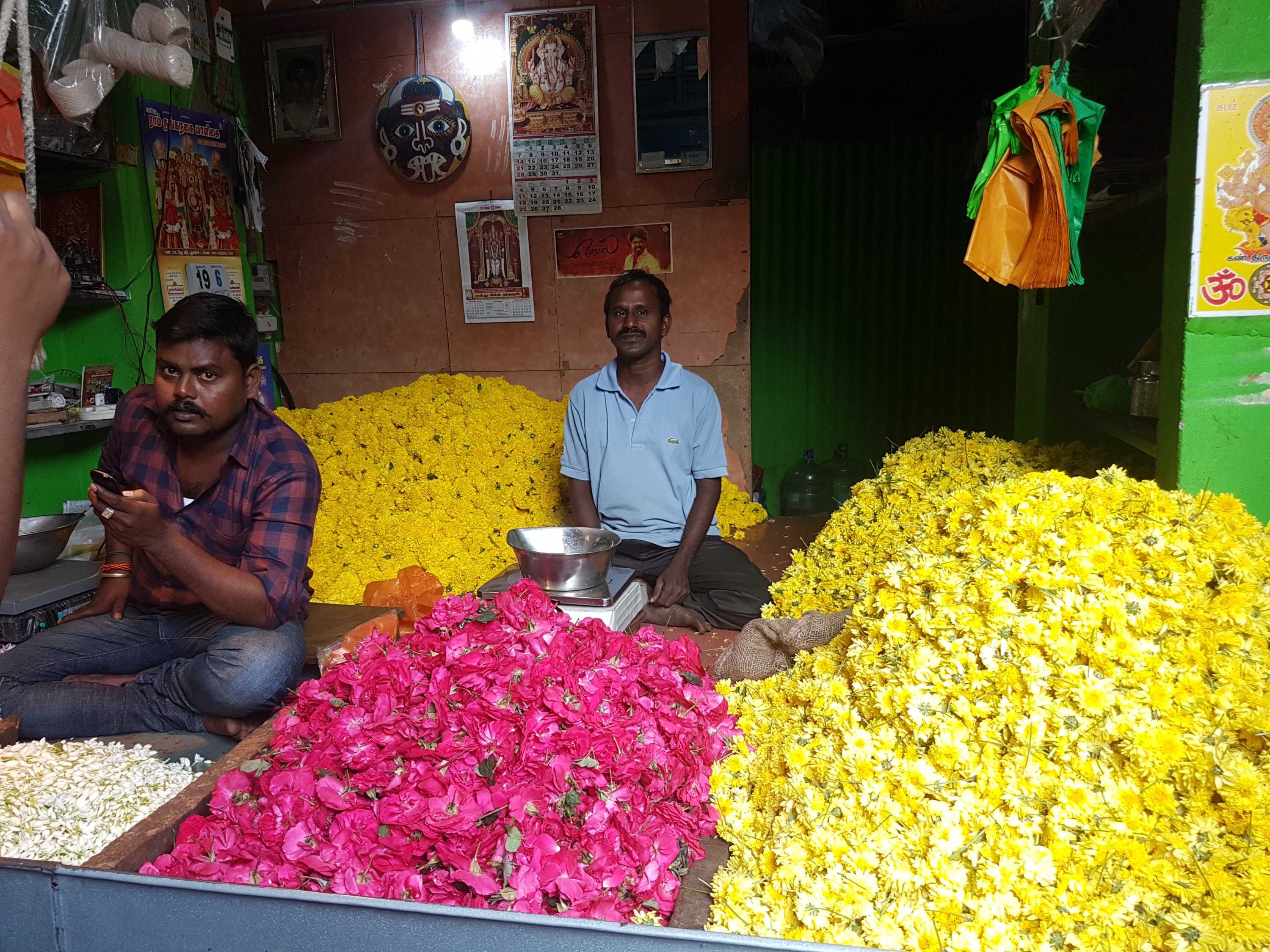
What can you say about an Indian city that offers you croissants, baguettes, elegant tree lined streets, a selection of fine cheeses, wines and beers, gendarmes, a seaside promenade and the choice of either enlightenment or salvation, all in French, Tamil, and English. Bonjour?
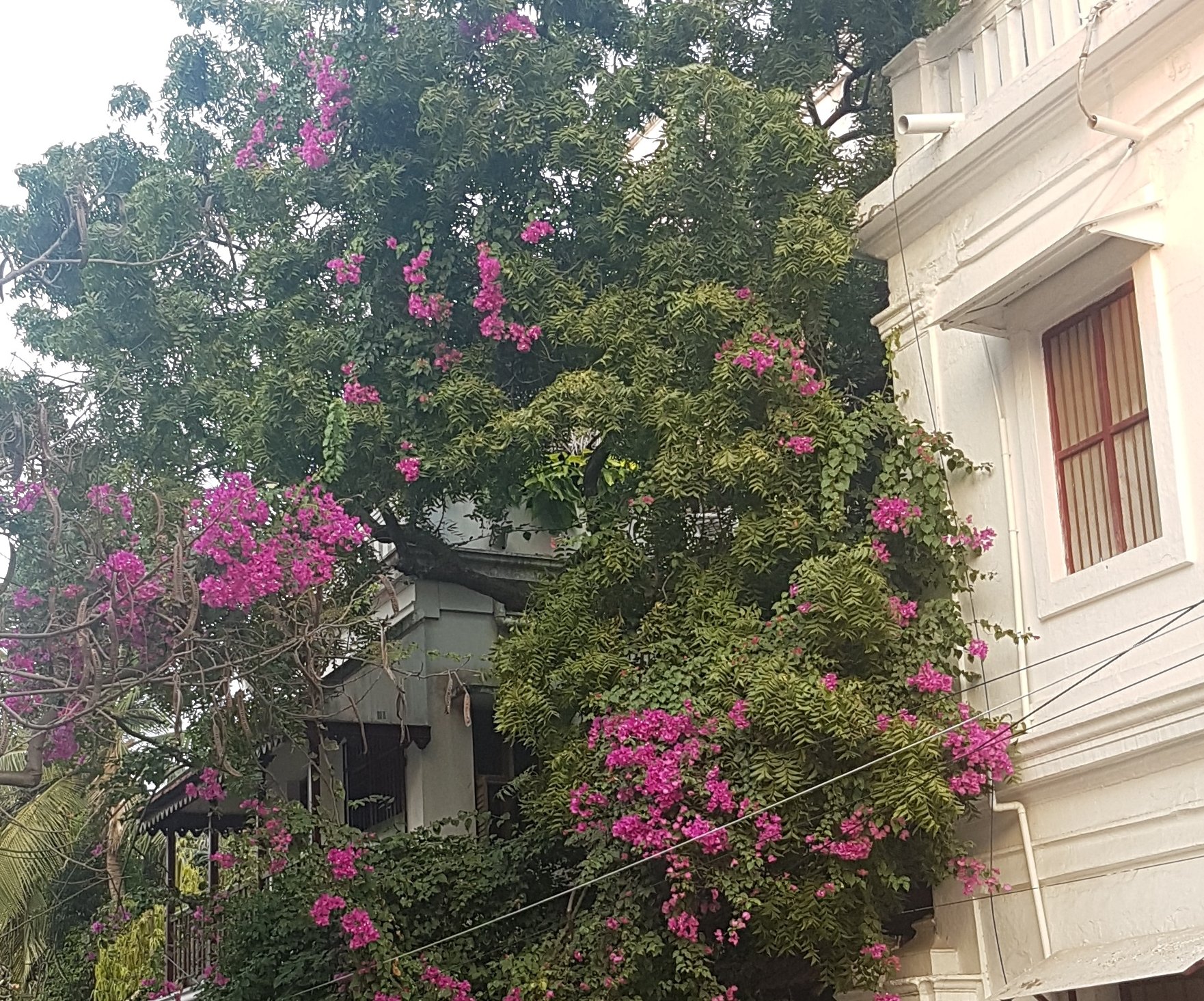
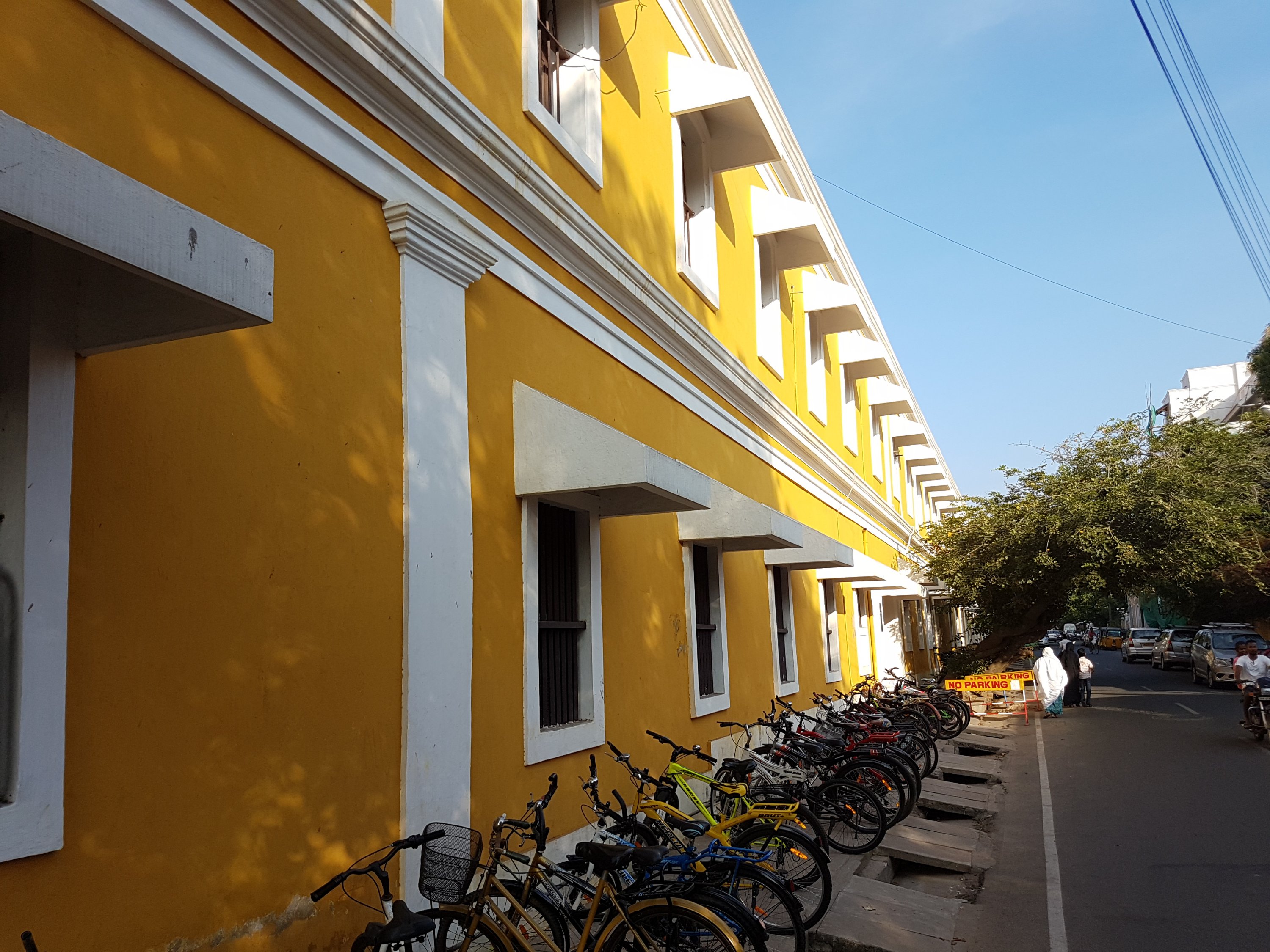
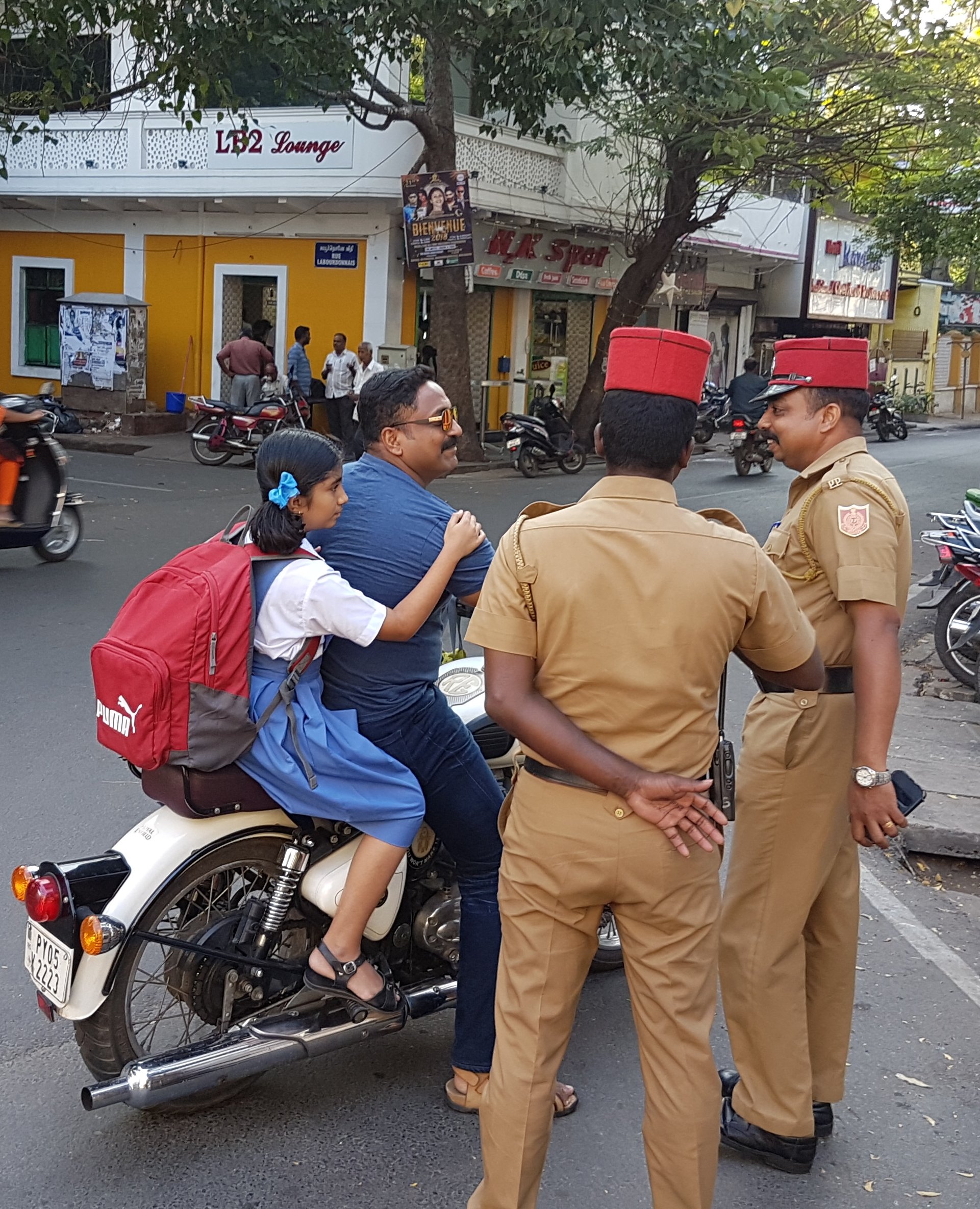
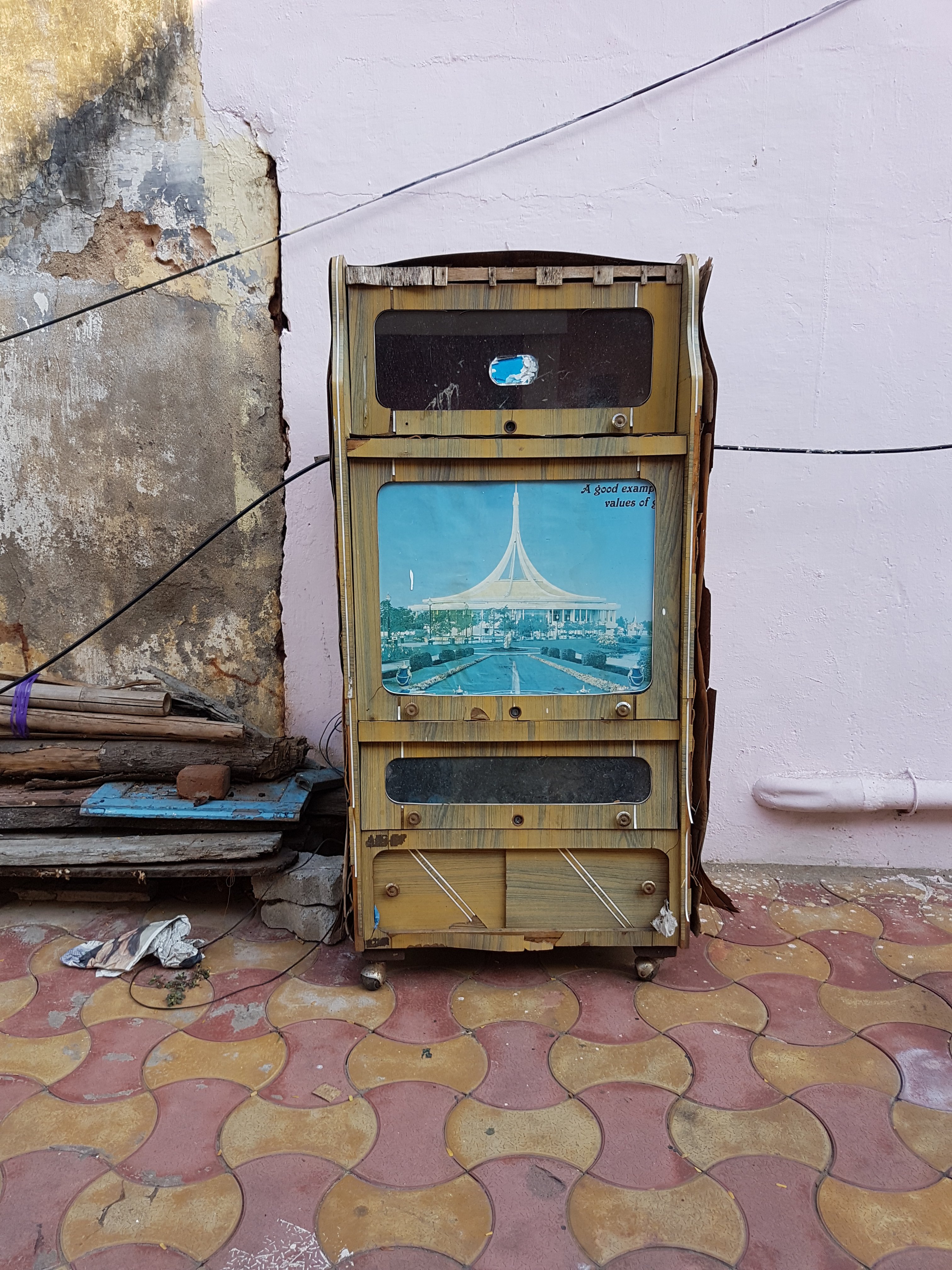
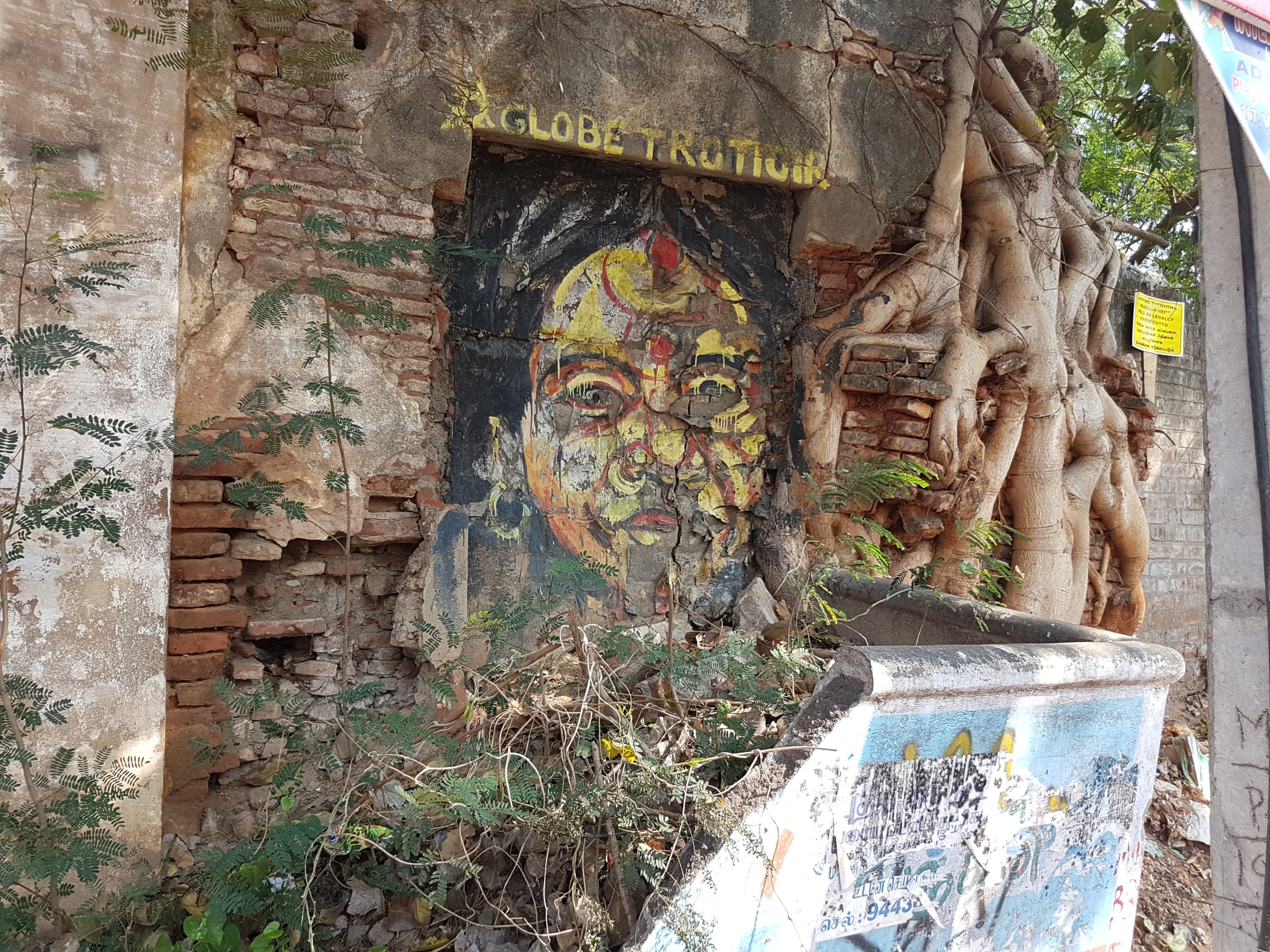
A three week stay in an apartment in the French quarter of Pondicherry offered all of the above, and more. It was fantastic to have the chance to relax into a place, to cook for ourselves and to have a comfortable retreat from the occasionally too busy world beyond. We also got to visit Auroville, a world class push into the future.
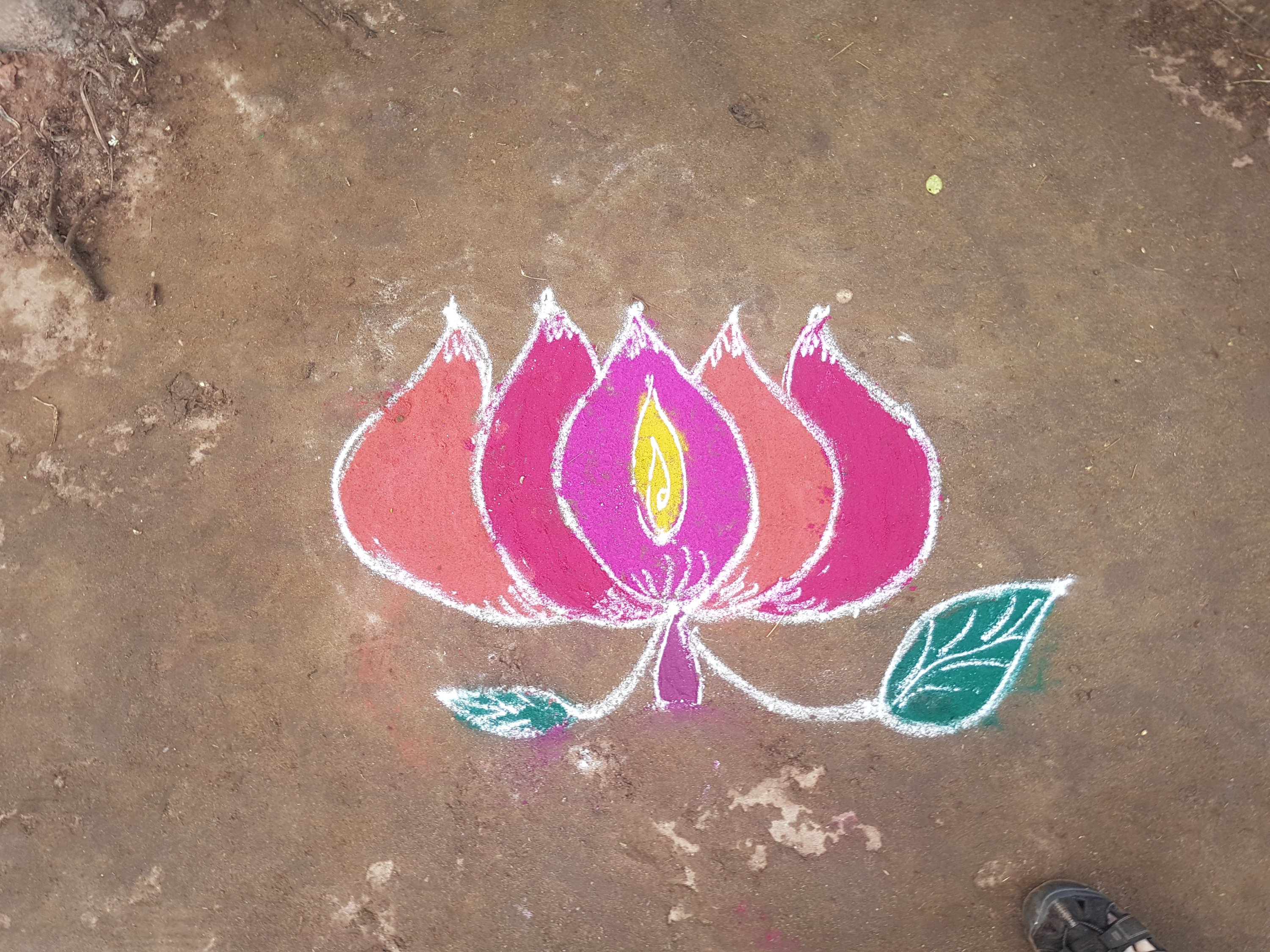
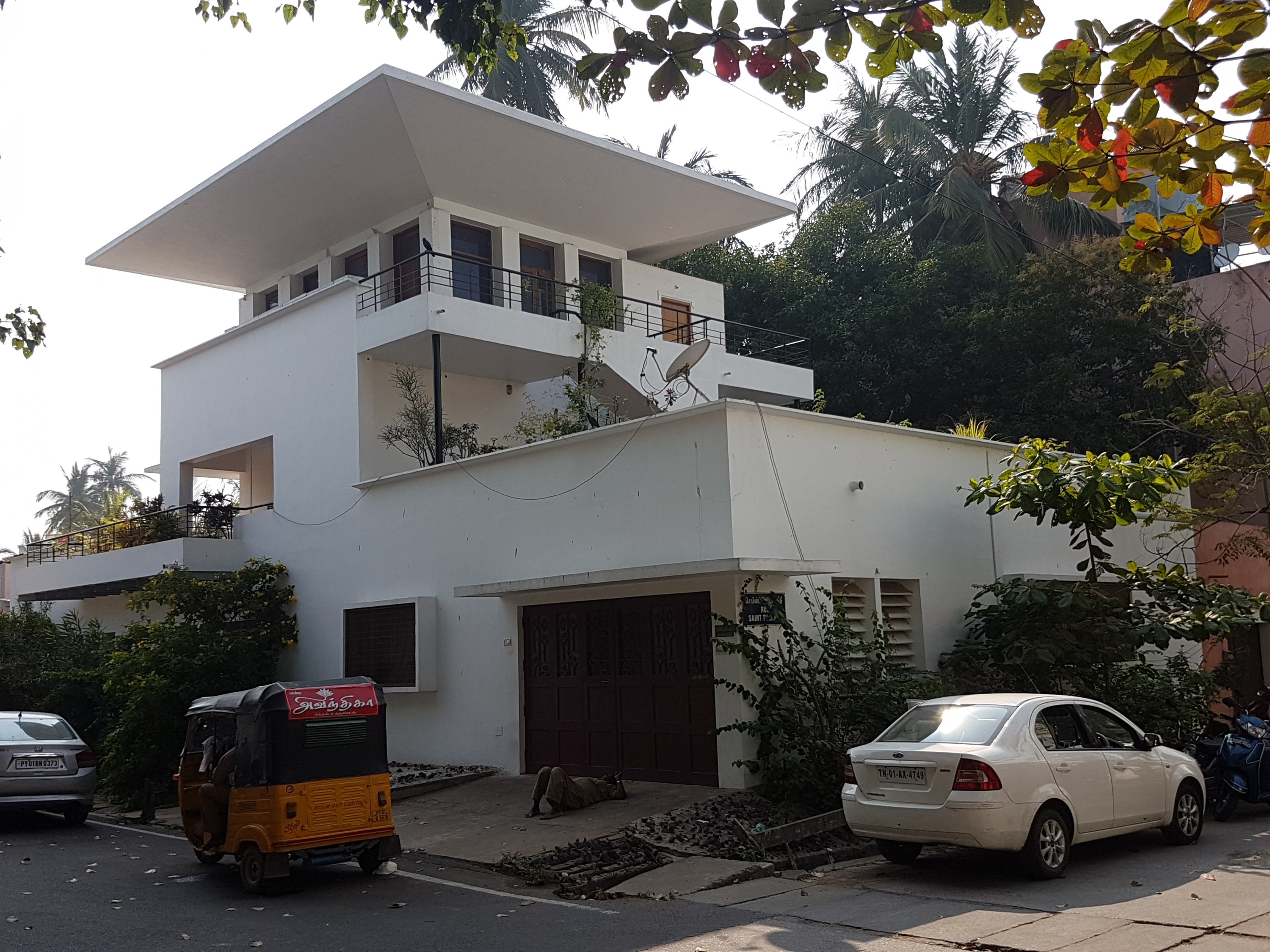
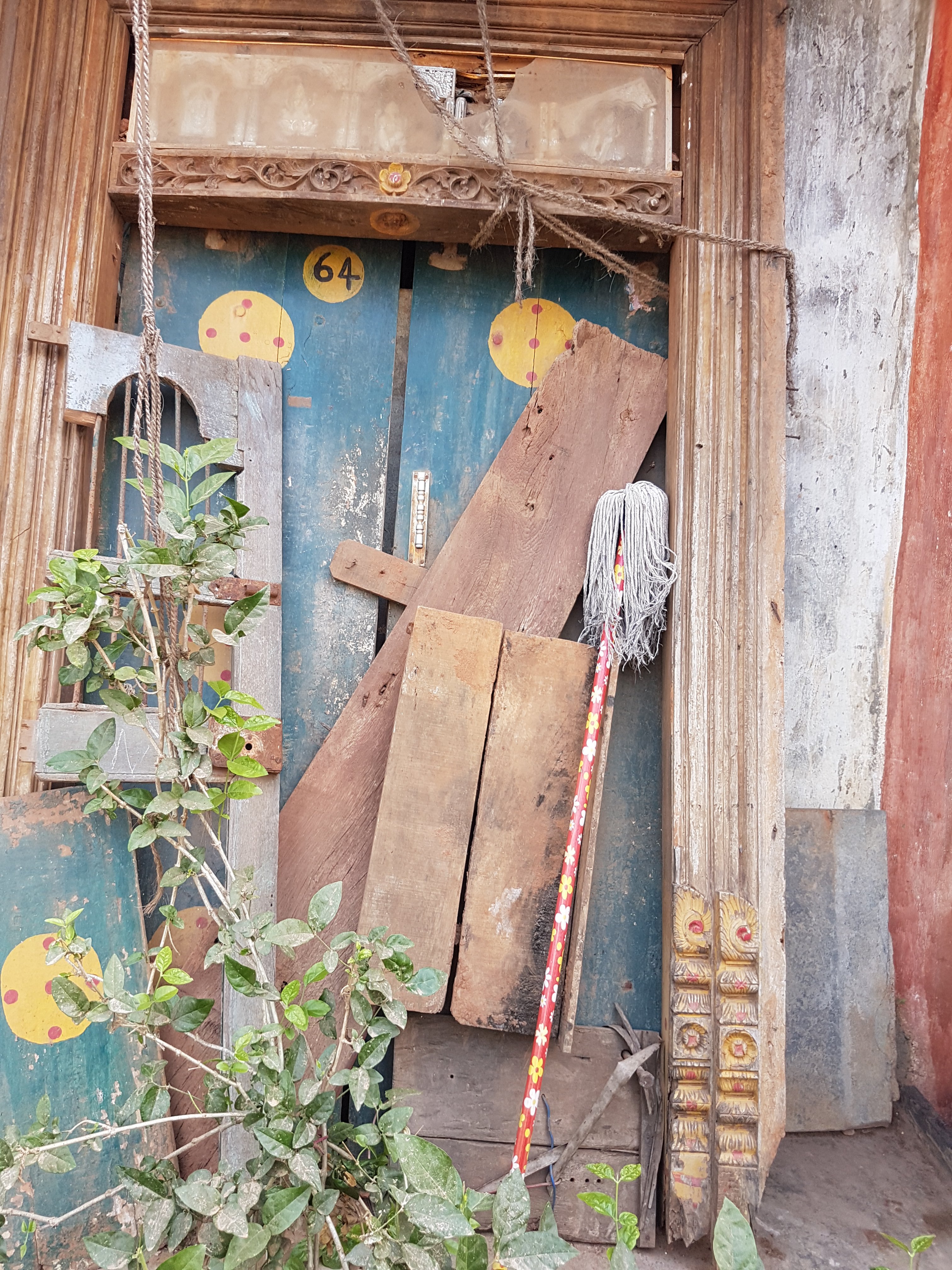
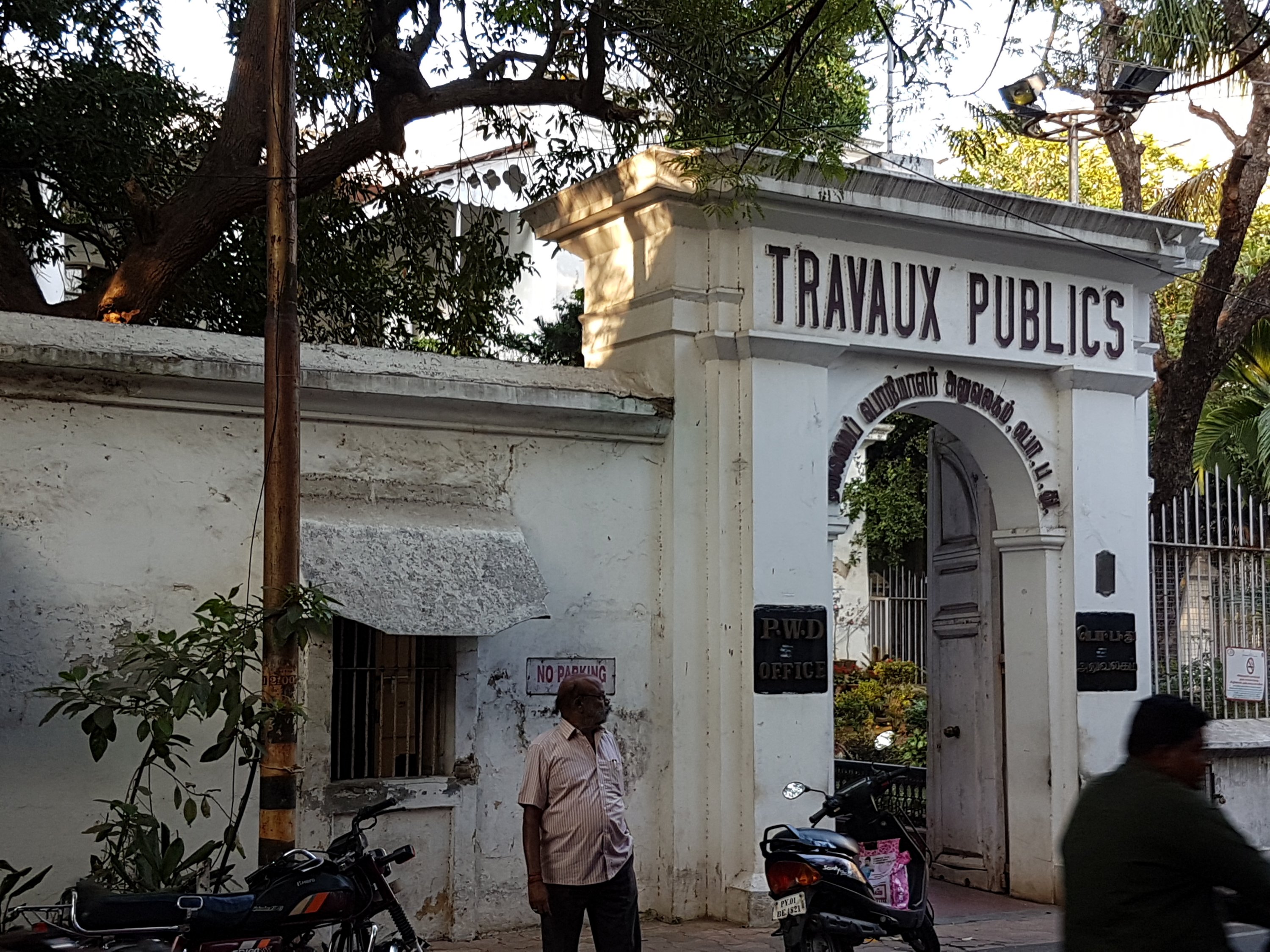
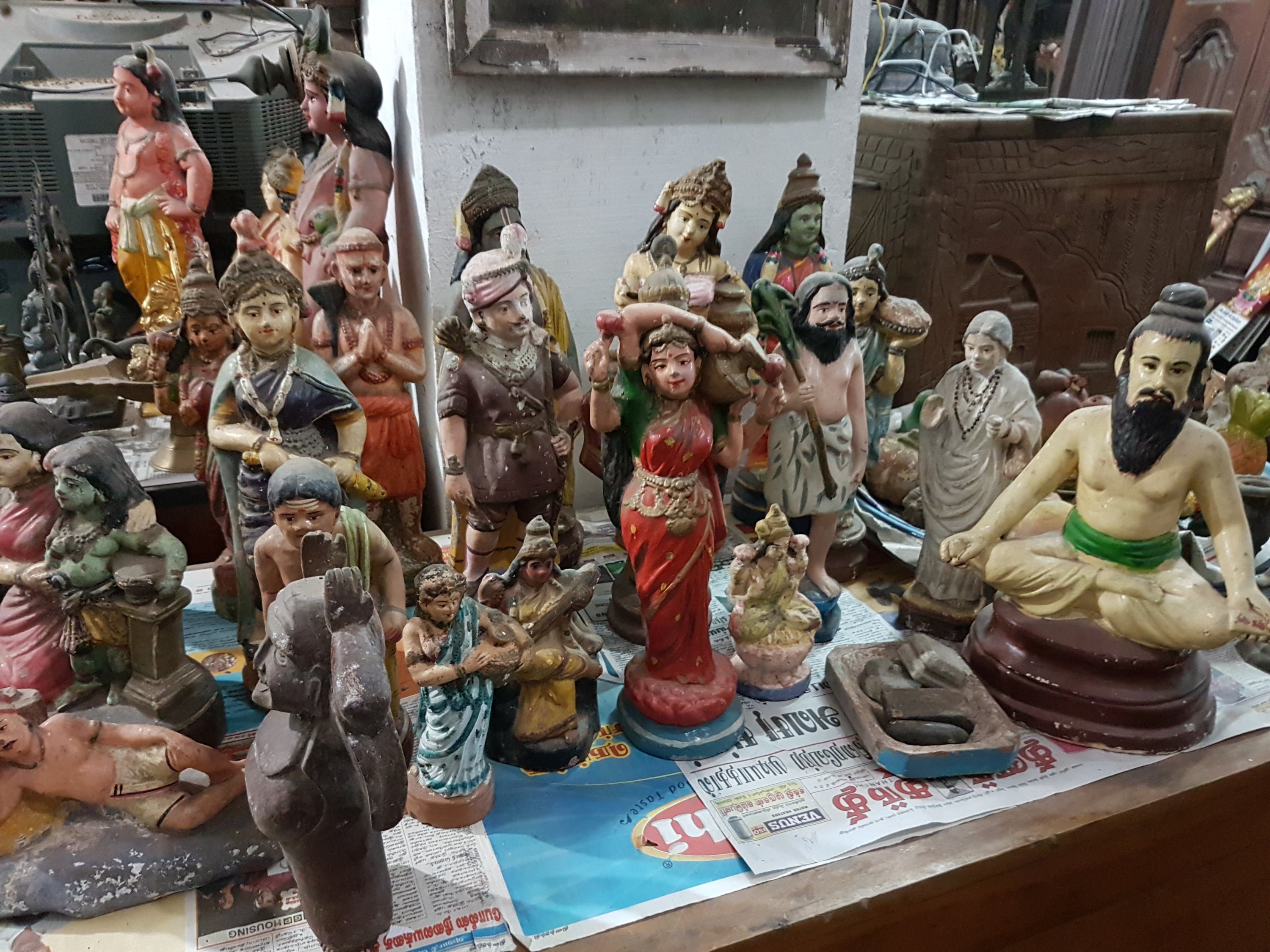
We began our approach three days previously on our first visit to Auroville. Step one was to watch a video explaining the origin of Auroville, and the idea of the Matrimandir. Some of this we knew already: the foundation of an ashram in Pondicherry based around the teachings of Sri Aurobindo; the role of the Mother, an acolyte, in developing the work of the ashram out into the world and into education; the gestation of the idea of a world city, in which the evolution of consciousness is central to the community; and finally the siting of this idea on barren but not unpopulated land north of Pondicherry. A city open to all and dedicated to the next phase of human evolution. The Matrimandir itself, the venue of concentration, literally the spiritual hub, was built between 1973 and 2008. After watching the video we could then make the twenty minute walk along the beautiful path from the visitor centre to the viewing point on the edge of the Park of Unity. Signs asked visitors to maintain a respectful silence. A group of German tourists were quietly being lectured by their leader. A hundred and fifty metres away the Matrimandir floated above the green planted sea, a clear blue sky above.
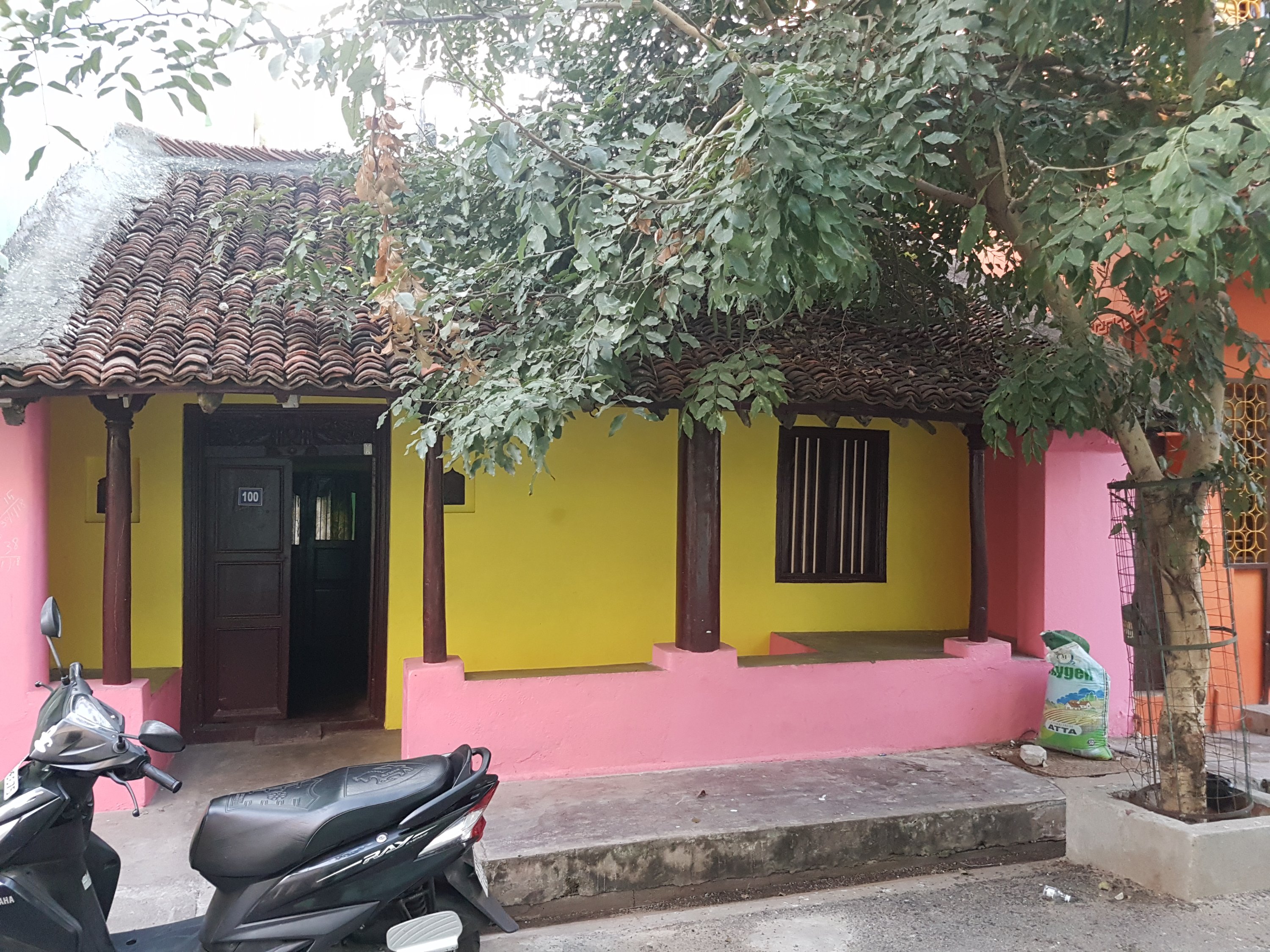



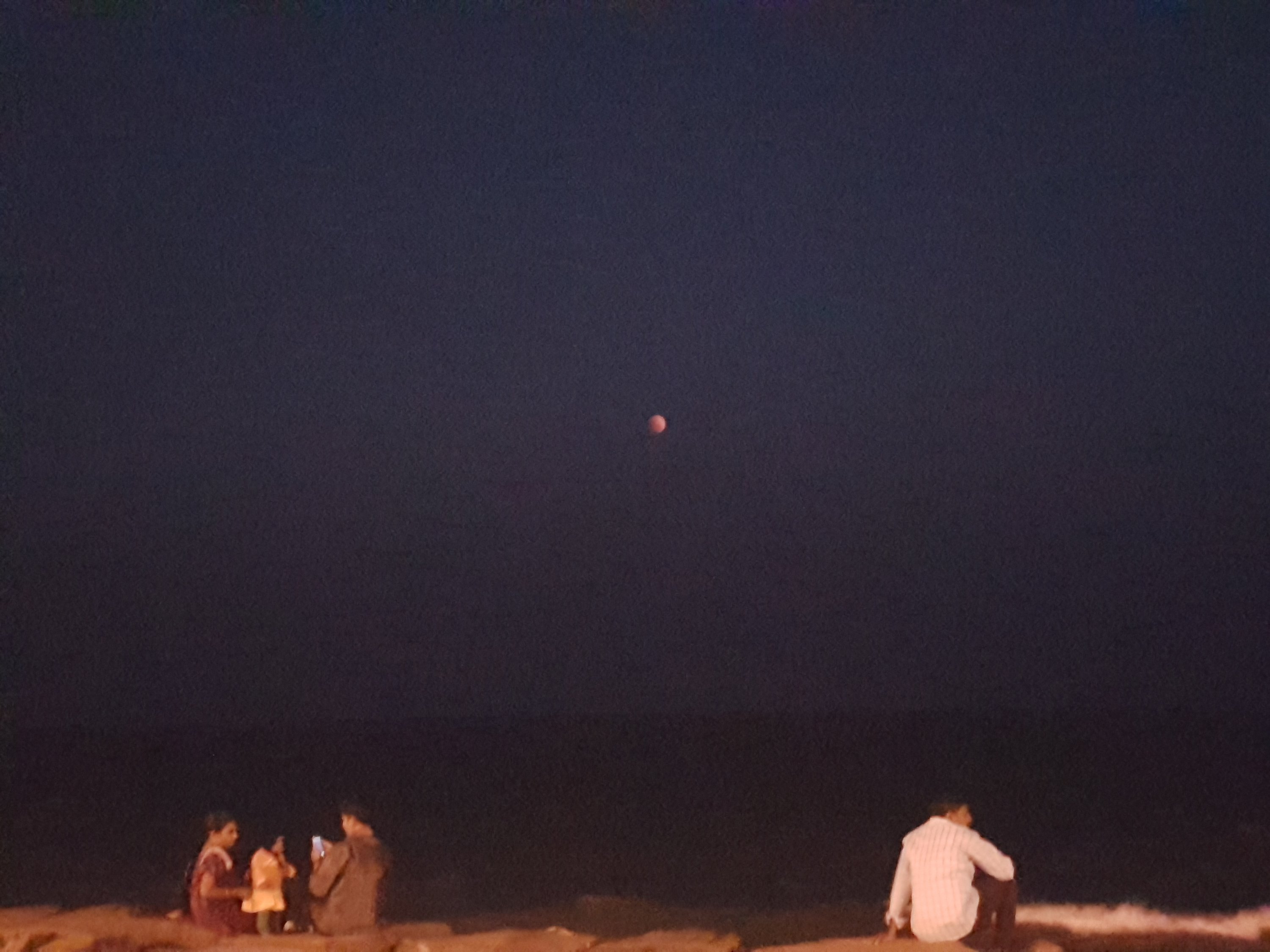
It is a working temple, if you wish to visit you have to take part, which really amounts to being silent. Once you’ve seen the video and been to the viewing point, a form needs to be filled out, and a place booked for morning ‘concentration’. So it was that three days later we arrived at the visitor centre somewhat excited and trepidatious, but ready for concentration. Along with a hundred others we sat in a small theatre and watched a further film, that explained in greater detail the ideas behind Auroville; perhaps, as Tash suggested, a recruitment video. We were now issued with passes, and bussed to the edge of the Park of Unity. Here we handed over bags and phones, were met by our guide who explained our route through the park, the minor list of dos and don’ts. I realised some part of me was afraid – what if…? We entered the Park, walking along an outer path, with lawns and planting landscaped to our right and leading to the Matrimandir. Our guide paused, waiting for the group to coalesce around him; another gently communicated point of information. Three women, from somewhere west, well established in age, and varying forms of glamour, stood at the back and talked throughout. I remembered teaching.
As we silently approached the Matrimandir, and the hooligans chattered away, I drifted to the back. We left our shoes and descended the slope between two of the twelve stone petals. Half way down we entered a corridor on our left that took us past a meditation room, one in each of the twelve petals. Then out and down, until we were underneath the gold clad sphere, a beautiful cascade of water flowing over circular slabs centre stage. We sat in silence, amidst the water and birdsong.
It was ritual, it was theatre, it was dramatic and exciting.

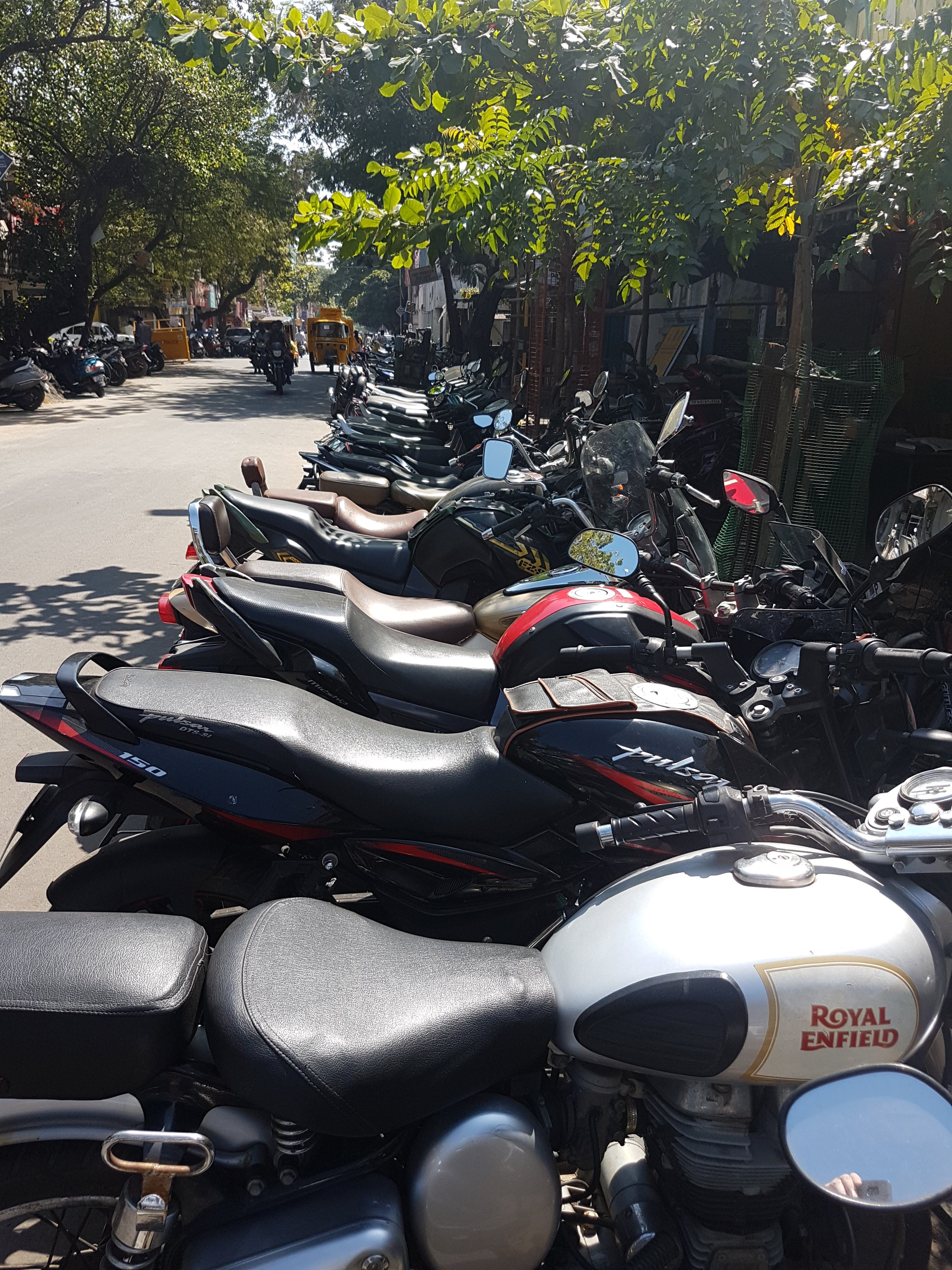
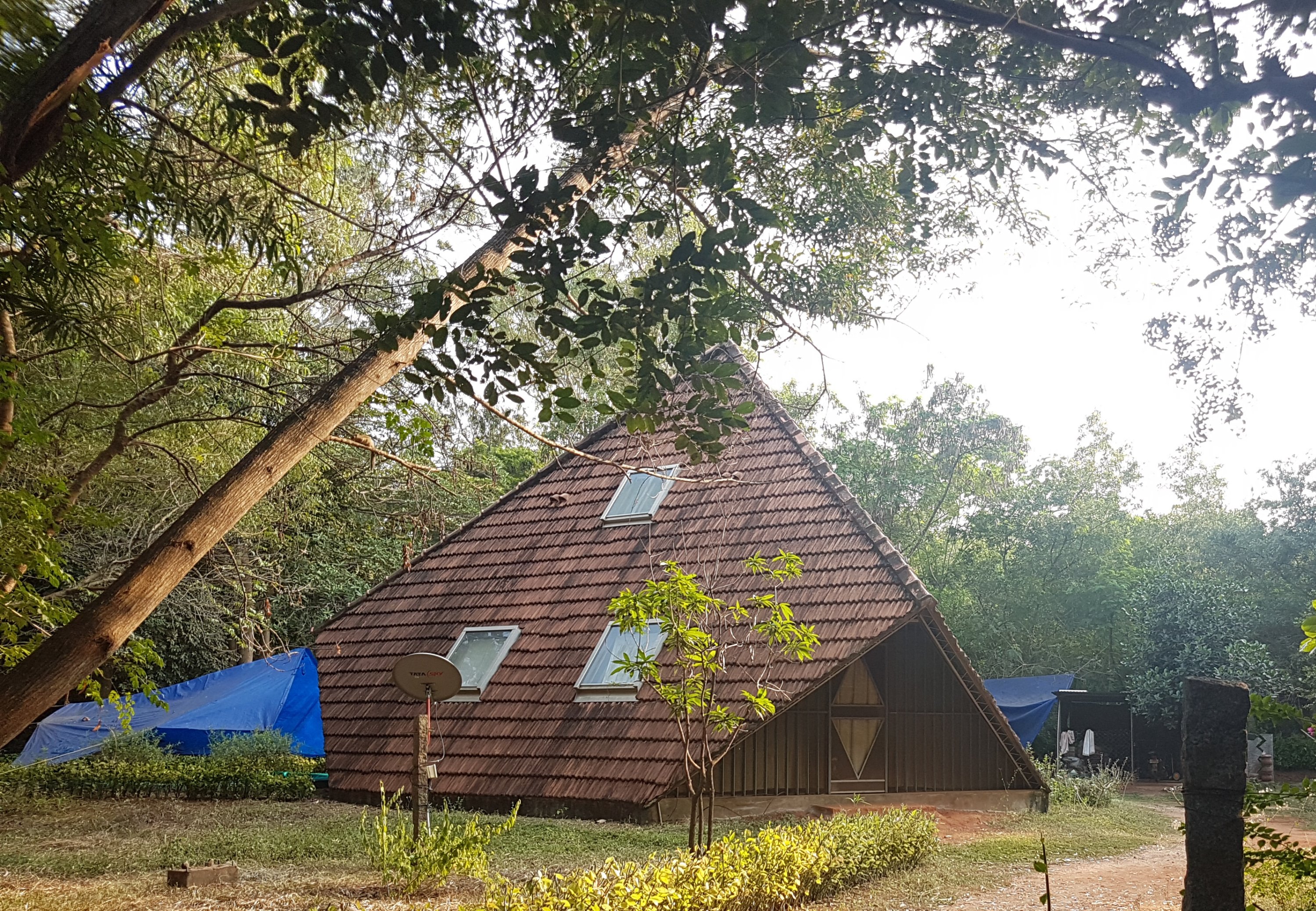


We scootered off to the Solar Kitchen, a communal hall that produces nearly two thousand meals a day for the residents and guests of Auroville. You cannot buy a meal. How did it work? Why is it called solar? As we studied a noticeboard an elegant frenchman appeared at our side. ‘Come with me, I will show you’. We followed him past signs saying no entry, as he nodded and greeted people, up some stairs and onto the roof. Here a massive parabolic dish covered in mirrors tracked the progress of the sun, and focused that light onto a water filled copper coil. The resulting steam drove the kitchen. Gilles had designed and made this system some twenty years ago. He was an old hand. As we thanked him and made our way, he joined the queue for lunch.
Auroville is an incredible place, a mass of contradictions, sometimes like a campus in a forest, sometimes a building site in a wilderness. There were no trees here fifty years ago, now, after millions of plantings, and simple but effective water management, the forest extends for thirty kilometres – the government even sends teams to study the process. It’s trying to be a community, even if numbers are still quite small, but is also a tourist destination. Resolving its contradictions, like any society, is central to determining its survival.

